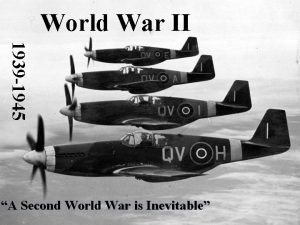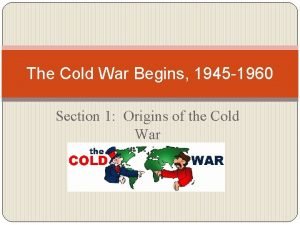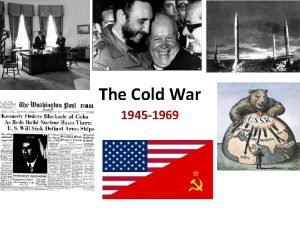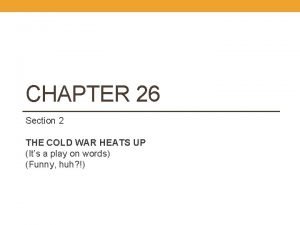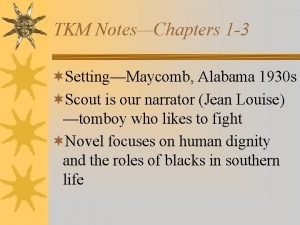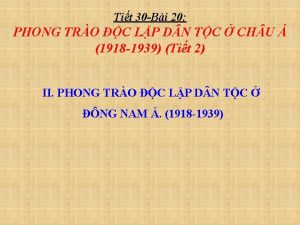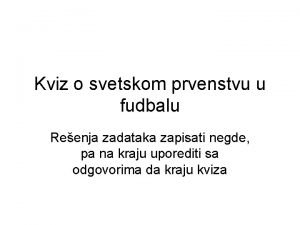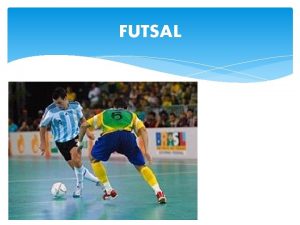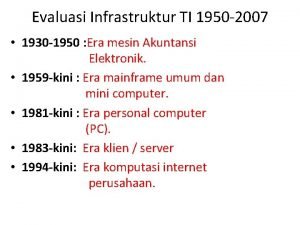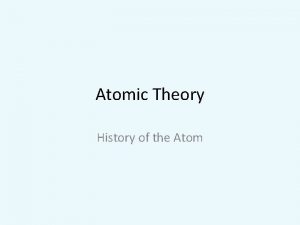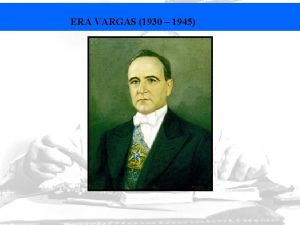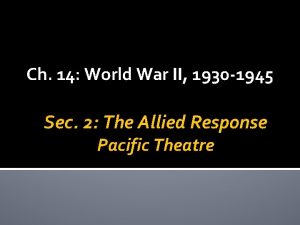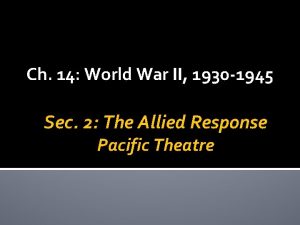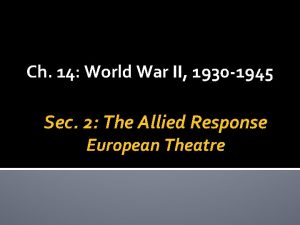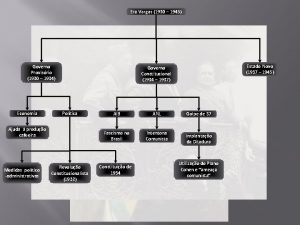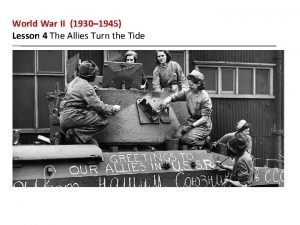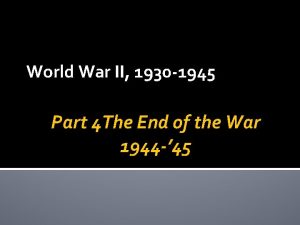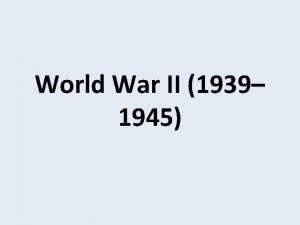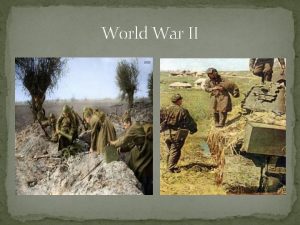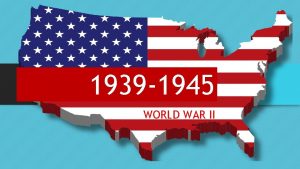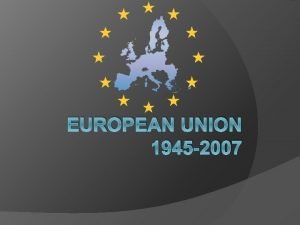Ch 14 World War II 1930 1945 Sec















- Slides: 15

Ch. 14: World War II, 1930 -1945 Sec. 1: Axis Aggression

Timeline of Events Leading to WWII � 1933: Hitler becomes Chancellor of Germany � 1933 -39: begins rearmament & military build-up in Germany � 1936: Reoccupies the Rhineland � Spring, 1938: Annexes Austria (Anschluss) � Sept. 1938: Munich Conference (gets Sudetenland); Takes all of Czechoslovakia � 1939: Nazi-Soviet Non-Aggression Pact � Sept. 1, 1939: German invasion of Poland

Germany Expands, 1933 -1939 Hitler came to power in 1933 Attacked Treaty of Versailles Lebensraum = living space Begins rebuilding military (pretextresist spread of communism)

German Aggression, 1933 -36 GERMANY REARMS 1933 -1939 GERMAN REOCCUPATION OF THE RHINELAND, 1936

The Spanish Civil War, 1936 �Germany, Japan, and Italy join alliance known as the Axis Powers �The Spanish Civil War, 1936 Spanish nationalists (fascists) under Gen. Francisco Franco tries to overthrow the existing Republican govt. in Spain Hitler & Mussolini supported Franco while the Republicans backed by USSR & U. S. independents Franco’s Nationalists win, adding another fascist govt. to Europe

Picasso’s Guernica

Annexation of Austria, 1938 GERMANY ANNEXES AUSTRIA ANSCHLUSS, 1938 � Hitler claims that Austrian government is “mistreating” German residents. � He is simply enforcing their protection from discrimination � Forces Chancellor Kurt Schuschnigg to turn over govt.

The Czechoslovakian Crisis, 1938 The Sudetenland

The Munich Conference, Sept. 1938 Hitler and Mussolini invite reps from Britain (N. Chamberlain) & France (E. Daladier) to discuss Germany’s situation in Sudetenland � Chamberlain follows policy of appeasement (gives in to Hitler in exchange for promise of no more land grabs); “Peace in Our Time” � Hitler moved into remainder of Czechoslovakia by end of 1938 � Hitler and Chamberlain shaking hands at Munich Conference, 1938

Cartoonists’ Views on Appeasement

War Begins in 1939 � Nazi-Soviet Non-Aggression Pact Hitler signs agreement with Stalin (USSR): states that neither would attack each other and they would split Poland � Invasion of Poland- September 1, 1939 Germany invades Poland -Sept. , 1939; Stalin attacks from East Sept. 3 – Britain & France declare war � Blitzkrieg warfare Speed and close air-to land coordination By mid-June 1940, Hitler in control of Denmark, Norway, Sweden, the Netherlands, Belgium, and France!


Battle of Britain, Summer 1940 �Britain stood alone against Nazi onslaught Germans try to bomb England into submission British helped by dev. of radar German Luftwaffe killed thousands in London Blitz, but British refuse to surrender RAF victories and stubborn leader, Winston Churchill who vows never to surrender, convinces Hitler not to invade Britain

Never have so many owed so much to so few… Sir Winston Churchill

Invasion of Soviet Union, 1941 �June, 1941: Hitler breaks his pact with Stalin and invades USSR (Operation Barbarossa) German blitzkrieg once again effective as German units race across Soviet Union �Winter to the rescue Harsh winter sat in and slowed German advance The Red Army of USSR did not collapse and began to turn the tide
 1945 world war ii
1945 world war ii 1945 world war
1945 world war The cold war begins 1945-1960
The cold war begins 1945-1960 The cold war heats up: 1945 - 1969
The cold war heats up: 1945 - 1969 Chapter 26 section 2 the cold war heats up answer key
Chapter 26 section 2 the cold war heats up answer key Maycomb alabama 1930
Maycomb alabama 1930 Nguyễn ái quốc 1930
Nguyễn ái quốc 1930 Fashion 1930 to 1940
Fashion 1930 to 1940 1930 pop culture
1930 pop culture Quien es la bestia que sube del mar
Quien es la bestia que sube del mar Svetsko prvenstvo pobednici
Svetsko prvenstvo pobednici The place where futsal created in 1930 was in
The place where futsal created in 1930 was in 2007-1930
2007-1930 Matkova tina ekspresionizem
Matkova tina ekspresionizem đảng cộng sản việt nam 1930
đảng cộng sản việt nam 1930 How many protons does oxygen have
How many protons does oxygen have
